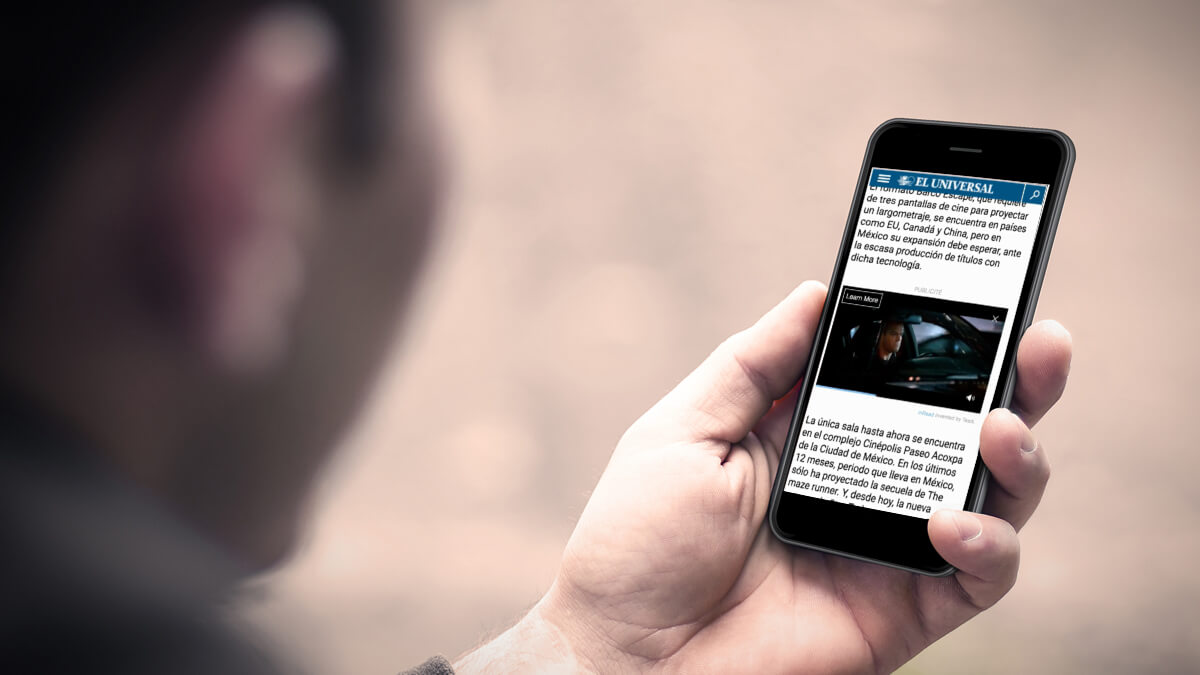Now feel this: Immersion launches first Haptic Ad Service
The new offering provides self-service tools so advertisers can add engine rumble, footsteps, thunder shaking and more to mobile video ads.
San Jose, California-based Immersion has launched its Haptic Ad Service for the development, management and tracking of mobile ads that provide physical feedback, like car engine vibration, thunder rumble or horse hooves’ impacts.
VP of Marketing and Product Management Todd Whitaker told me that this is the first time for feel-based mobile advertising at scale, something that cannot be offered in, say, TV or laptop/desktop ads. He added that while there are other one-off haptic ads, “we’re not aware of any competitor” offering such a service.
Examples: shaking a martini in an ad for Stoli vodka, feeling the engine rumble in a Peugeot ad or detecting a slight vibration when the lights flicker in a trailer for the movie “American Poltergeist.”
You can check out Immersion’s free Content Portal app (Android only), wjocj contains links to sample ads. The ads can be run in a mobile web browser or in apps supporting HTML5, on any Android smartphone or on tablets with actuator motors. Whitaker said Apple’s iOS platform is currently too restrictive for the ads to work.
The new service builds on what the company has been offering since 2014, when it began delivering tactile ads to the Showtime Anytime app. Since then, it has undertaken more than 50 campaigns.
Until the release of this new service, the haptic ads required that Immersion handle the haptic creative development, and that the ads utilize its software development kit (SDK).
In June, Immersion released an open beta version of its TouchSense Design Cloud, so that advertisers and agency could build their own ads.
It contains a Haptic Monitor for Android mobile devices so an ad designer can feel the effects on a mobile device as they are created in a desktop audio editor, since the effects begin life as a .wav audio file. There’s also a desktop Haptic Monitor Connect for Mac that links the Haptic Monitor to the audio editor and a web portal for sharing the results with clients and others.
The new service offers a release version of that Design Cloud, professional services for designing and delivering haptic ads if you want Immersion to do the work and a release version of a new TouchSense Campaign Manager.
Up ’til now, Whitaker said, Immersion “sold an SDK to enable haptic effects, [and the customer] would tell us how many and what kind of effects” they wanted. Now, the creation and management has become largely self-service.
Instead of an SDK, the new Service utilizes a HTML5 VPAID tag that reaches out to the cloud-based Campaign Manager for the creative assets at runtime. The Manager also allows clients to review campaign results. Here’s a screen from Campaign Manager:
The HTML5 commands, which tell the actuator what kind of vibrations to make and when, are generated from the .wav sound file in the editing process, instead of a proprietary .HAPT file that had been generated before the launch of this new service. Whitaker told me there are thousands of potential haptic effects that are variations of vibrations.
Before, clients had to work with the several ad networks that supported the Immersion SDK, but now they can utilize any network that supports the standard VPAID spec. Since the service has just launched, Whitaker says it doesn’t yet have any participating ad networks.
Does it make a difference if users can feel the rumbling or trotting or thundering in a mobile video ad?
Immersion cites a campaign it did for the Peugeot 308 GTI, which included the feel of an engine rumbling. The results: a 220-percent increase in click-through rates, a 111-percent increase in mobile ad recall, and a doubling of Brand Sentiment and Consideration Intent, compared to an ad without haptics.
Separately, Immersion says its research has also determined that 85 percent of tactile users “feel more immersed and engaged.”
Whittaker points out that haptic-enabled mobile video ads are sound-muted by default but play their haptic vibration. Video ad marketplace Teads, he said, found that slightly more than half of users who encountered a muted video ad with haptic vibration,turned on the sound to play the ad.
Marketing Land – Internet Marketing News, Strategies & Tips
(44)






